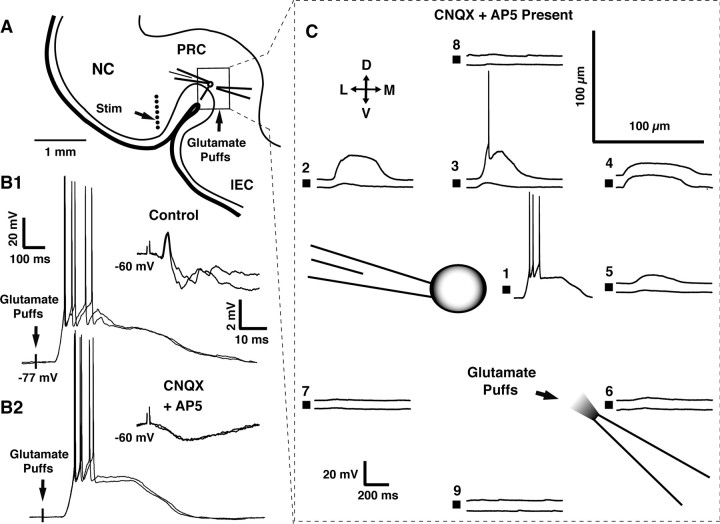Figure 4.
Contrasting effects of CNQX and AP-5 on synaptically released versus pressure-applied glutamate. Control experiments designed to test the feasibility and spatial selectivity of local pressure glutamate applications in the presence of glutamate receptor antagonists. A, Scheme showing the experimental approach used in these control experiments. An array of stimulating electrodes (dots) was positioned in area 36 while monitoring evoked responses with the patch method in superficial area 35 neurons. A second pipette containing 0.5 mm glutamate (dissolved in aCSF) was positioned at proximity of the recorded neuron. B, Responses to pressure-applied (left) or synaptically released (right) glutamate in control aCSF (B1) versus after addition of CNQX and AP-5 to the aCSF (B2). C, Spatial selectivity of responses to pressure-applied glutamate. Pressure applications of glutamate were performed at various locations (100 μm grid pattern; red squares) around a perirhinal cell recorded in whole-cell mode. Two stimulus durations (60 and 100 ms) were tested (bottom and top traces, respectively). Only two of the ejection sites (C1, C3), both located in the immediate vicinity of the soma, evoked suprathreshold responses in this perirhinal neuron. D, Dorsal; V, ventral; L, lateral; M, medial; NC, neocortex.

